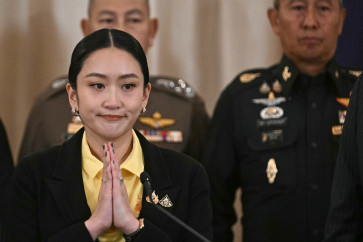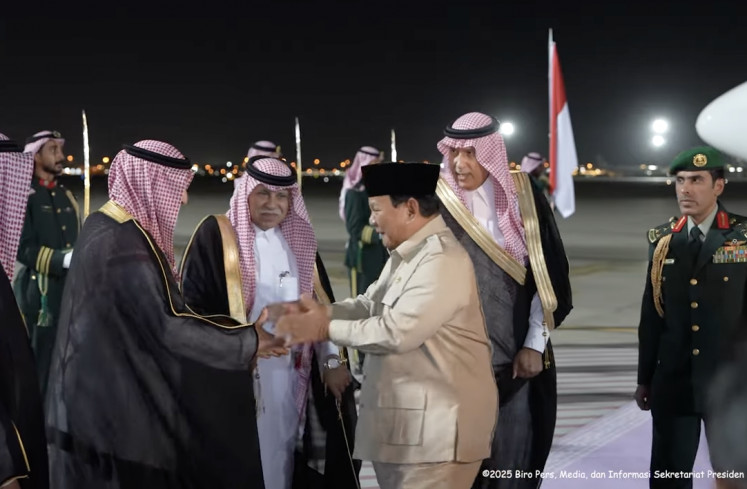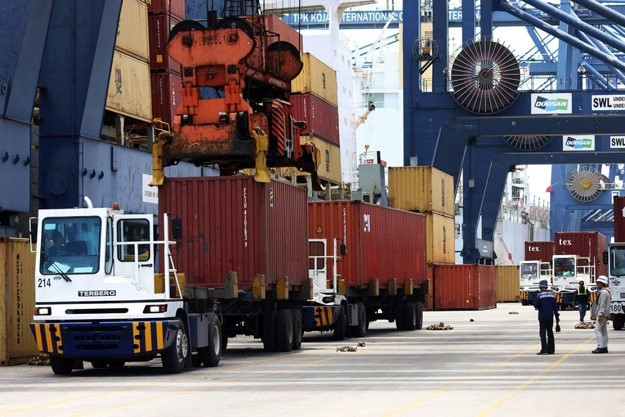Popular Reads
Top Results
Can't find what you're looking for?
View all search resultsPopular Reads
Top Results
Can't find what you're looking for?
View all search resultsCan there be ASEAN centrality without unity?
During an international seminar organized by the Centre for Strategic and International Studies (CSIS) to commemorate its 45th anniversary last week, the Indonesian ambassador to the UK and former CSIS executive director, Rizal Sukma, posed one of the pertinent strategic questions of the day: Can ASEAN maintain its centrality without unity? He raised the question in light of criticisms that ASEAN has been unable to act as one in dealing with China in the South China Sea
Change text size
Gift Premium Articles
to Anyone

D
uring an international seminar organized by the Centre for Strategic and International Studies (CSIS) to commemorate its 45th anniversary last week, the Indonesian ambassador to the UK and former CSIS executive director, Rizal Sukma, posed one of the pertinent strategic questions of the day: Can ASEAN maintain its centrality without unity?
He raised the question in light of criticisms that ASEAN has been unable to act as one in dealing with China in the South China Sea. We witnessed this disunity play out in Cambodia in 2012 and almost saw its repetition in Vientiane two months ago if it hadn’t been for the hard work of Foreign Minister Retno LP Marsudi and her team.
The question of “centrality without unity” nevertheless remains pertinent, not just for Jakarta, but for the wider Indo-Pacific region as well. After all, for better or worse, ASEAN — along with its offspring institutions like the ASEAN Regional Forum (ARF), the ASEAN Defense Ministers Meeting Plus (ADMM Plus) and the East Asia Summit (EAS) — remains the only all-inclusive cornerstone of a burgeoning regional order.
Of course, like all important strategic questions, there are no easy, clear-cut answers; at least none that would please everyone. But to move the conversation productively forward, let’s be clear on what ASEAN centrality is and is not.
Despite claims to the contrary, centrality is not interchangeable with or equivalent to consensus. In fact, consensus is only one of the preconditions for, or pathways toward, centrality.
As defined by the ASEAN Charter, centrality is the notion that ASEAN should be the “primary driving force” in shaping the group’s external relations in a regional architecture that is open, transparent and inclusive (Article 1).
Centrality is therefore not an outcome, or some end-state to run toward. It is the run itself — an ongoing process of continuous engagements with external partners. In other words, it is not a question of whether ASEAN is central, but to what extent and how.
It should also be noted that consensus does not always imply unanimity of position (as reflected in joint statements). Sometimes consensus can be an agreement to disagree — not necessarily a stark choice between “agree on all words” or “no statement at all”.
After all, not only did we put in the “ASEAN-X” principle in the ASEAN charter as a formula for “flexible participation” (Article 21), but some of the group’s strategic successes have happened via informal mechanisms without unanimous public statements. So let’s not make unanimity of position in joint statements the be all and end all of centrality.
That said, while centrality is an ongoing process, it was originally “granted by default” during the post-Cold War strategic uncertainty in which distrust, disengagement and rivalry permeated regional powers (mainly the US, Japan and China).
As Lee Jones described some of ARF’s strategic history in the Journal of Current Southeast Asian Affairs (2010), ASEAN’s centrality in managing great-power relations then correlated with the incapacity of great powers to successfully mediate their relations on their own. In other words, centrality was initially “given” to ASEAN because it was the best neutral alternative in town that had done relatively well in regional affairs by the 1990s.
This often led to a sense of self-congratulatory complacency among ASEAN member states, but as polarizing issues like the South China Sea suggest, increasing the degree of centrality can only happen through strong and sustained leadership from within ASEAN.
Put differently, we now need to earn centrality, not just inherit it. We can consider several policies to this effect.
First, if consensus is a precondition for centrality, then autonomy is a precondition for consensus. Only when Southeast Asian states are free from external meddling and deliberate wedge-driving by their strategic partners can any steps forward be discussed.
Otherwise, some ASEAN members could become “vanguard states” in seeking out external great powers like the US to balance China, as recently argued by Laura Southgate and Nicholas Khoo in the Journal of Asian Security and International Affairs (2016) — effectively reverting Southeast Asia back into being another playground for the great powers.
Aside from reminding ASEAN’s regional partners about strategic autonomy, the group also needs to fulfill and deepen its integration commitments, whether through the ASEAN Community projects, or special engagement strategies for Cambodia and Laos.
Second, on the South China Sea, we can break down the problem into three policy areas: dispute resolution (long-term through bilateral negotiations), tension management (medium-term through an ASEAN-China framework like the Code of Conduct) and pragmatic de-escalation steps (short-term through creative diplomatic engagements).
This disaggregation allows us to recalibrate expectations about what ASEAN can or cannot achieve, rather than rehashing futile “glass half-full, half-empty” debates. For example, ASEAN is more useful for tension management, but less so for the others. Regional resources — diplomatic, financial and political — could therefore be aligned accordingly.
Finally, if we insist on making ASEAN a “rules-based” organization based on the charter — even though centrality isn’t tied to it — then as the group turns 50 next year, Indonesia could lead the charge to review the charter as stated in Article 50, or even perhaps consider amending it (as granted by Article 48).
Before ASEAN’s organizational challenges are settled — and the charter is only one of many – the quest for a stronger regional architecture, including the institutionalization of the EAS, would be grasping at straws.
Whatever road ASEAN takes, Indonesia should lead the way, but leadership often means accepting that the needs of the many outweigh the needs of the few, including our own.
______________________________
The writer is a researcher at the Centre for Strategic and International Studies (CSIS), Jakarta.









